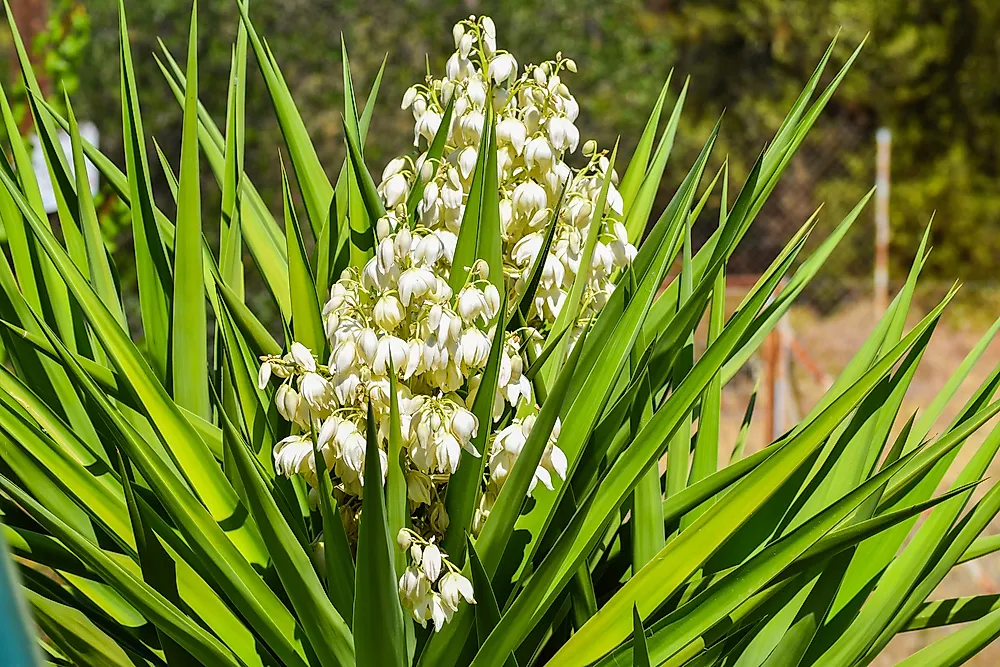What Is The State Flower of New Mexico?

The yucca flower is the state flower of New Mexico. It was designated the state flower on March 14, 1927. The flower was selected by schoolchildren of the state and recommended by the Federation of Women's Clubs. New Mexico does not specify the particular species of yucca, but there are about 50 species of the plant that are perennials, trees, and shrubs native to the dry and hot regions of Central America, North America, and West Indies. Early settlers of New Mexico called the flowers “our Lord’s candles” because of their beauty and abundance on the deserts and plains of the state. Native Americans used the roots of the yucca as a substitute for shampoo and soap. The yucca moth pollinates the yucca plant by deliberately transferring the pollen grains from the stamen to the stigma of the other plant. Many of the yuccas in New Mexico have edible parts including the stems, seeds, fruits, and in some instances the roots.
Distribution
The natural distribution range of the more than 50 species of yucca extends over the Americas. The plant habitat ranges from Mexico into Guatemala and to the north through California, southwestern United States, and as far north as southern Alberta in Canada. It is also native to some Caribbean islands, coastal regions of the southeastern United States, and the Gulf of Mexico. Yuccas have evolved for thousands of years and have adapted to a vast range of climatic conditions, they are found in the badlands, deserts, grasslands, prairies, mountainous regions, woodlands, meadows, and even in subtropical zones.
Facts About Yucca
- Yuccas are native to the dry and hot parts of North and Central America, and to the West Indies.
- Yuccas have short stems with a single large rosette and two small results that originate from the rhizomes.
- Yucca flower plants have leaves throughout the year, but the flowers bloom from July to August
- Scented Yucca flowers contain both the male and the female butts within the same flower.
- The leaves of the yucca plant are stiff and spear-like with marginal threads to prevent water loss.
- The yucca moth intentionally transfers pollen grains from testament of one plant to the stigma of the other plant.
- Several parts of the yucca plant are edible including the flowers, fruits, seeds, and some roots.
- When a yucca flower plant reaches 5-years, a flower-spike that can grow to more than six feet begins to develop.











